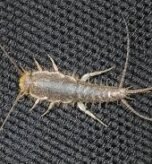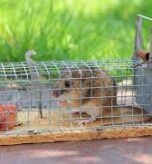The nocturnal creatures that wobble across our yards often spark a common question: Is it an opossum or a possum? This question highlights a widespread confusion in the opossum vs possum debate. Although people frequently use the names interchangeably, they refer to two entirely different groups of marsupials. This comprehensive guide will clarify the distinctions between the North American opossum and the Australian possum, exploring their unique biology, debunking common myths, and offering guidance for coexisting peacefully with these misunderstood animals.
The Great Debate: Opossum vs Possum – A Tale of Two Continents
To settle the opossum vs possum confusion, we first need to understand their names and where they live.
The Historical Roots of the Names
The word “opossum” is the original term, first documented in the early 17th century. It comes from the Virginia Algonquian language, where words like “apasum” meant “white dog” or “white small animal.” English colonists in Jamestown recorded it as “opassom.”
Later, the shorter term “possum” emerged through a linguistic process called aphesis, where the unaccented first vowel of a word is dropped. This abbreviated form appeared in writing by 1613. About 160 years later, British botanist Sir Joseph Banks encountered marsupials in Australia that vaguely resembled the American ones. He borrowed the name but dropped the “o,” calling them “possums.” This historical decision is the primary source of today’s confusion.
The Clear Geographic Divide
The most significant distinction between these animals is their native habitat.
- Opossums live exclusively in North, Central, and South America. The Virginia Opossum is the only marsupial native to the United States and Canada.
- Possums, in contrast, are native to Australia, New Guinea, New Zealand, and parts of Asia.
Distant Taxonomic Relatives
Despite both being marsupials (mammals that raise their young in a pouch), they are only distantly related.
- American opossums belong to the order Didelphimorphia.
- Australian possums fall under the suborder Phalangeriformes and are more closely related to kangaroos and koalas.
Meet the North American Opossum: Nature’s Quiet Janitor
The Virginia Opossum is a fascinating creature with unique traits and behaviors that make it a valuable part of our ecosystem.
Key Physical Characteristics of the Opossum
You can recognize the Virginia Opossum by its long, pointed snout, small dark eyes, and rounded, bare ears. Its fur is typically a light gray. Adults are about the size of a large house cat, weighing between 4 and 12 pounds. Their most notable features include:
- A Mouth Full of Teeth: The opossum has 50 teeth, more than any other North American land mammal. Despite this, its bite is surprisingly weak, and its open-mouthed, hissing display is mostly a bluff.
- Unique Feet: Their feet have five toes, with a long, thumb-like first toe on each hind foot that helps them grasp branches.
Fascinating Opossum Behaviors
- “Playing Possum” is Involuntary: One of the most famous opossum behaviors is not a conscious act. When faced with extreme fear, an opossum enters an involuntary, comatose-like state. Its body goes limp, its tongue hangs out, and it secretes a foul-smelling fluid that mimics the odor of decay. This state can last for minutes or even hours and effectively deters predators that prefer live prey.
- They Are Nocturnal Nomads: Opossums are active at night and rarely stay in one den for more than a few nights, unless it is a mother with her young. They use readily available shelters like hollow logs, abandoned burrows, or spaces under porches.
- They Are Excellent Climbers: Despite their waddling gait, opossums are skilled climbers, using their prehensile tails for balance. However, contrary to popular belief, adult opossums are too heavy to hang by their tails.
- They Don’t Hibernate: Opossums remain active in winter, though they slow down during cold spells. Their thin fur provides poor insulation, making them susceptible to frostbite on their ears and tails.
The Opossum’s Ecological Role as Nature’s Cleanup Crew
Opossums play a highly beneficial, and often underestimated, role in the environment.
An Omnivorous Diet
As omnivores and opportunistic scavengers, opossums eat almost anything. Their diet includes insects (like roaches and beetles), slugs, worms, mice, rats, snakes (including venomous ones), carrion (roadkill), fruits, and garbage. By consuming such a wide variety of items, they act as natural pest controllers and sanitation engineers, helping to keep ecosystems clean and balanced.
Debunking the Opossum Tick Myth
A popular urban myth claims that opossums eat thousands of ticks per week. However, scientific evidence has largely debunked this idea. While opossums are meticulous groomers and may eat some ticks incidentally, they are not a significant defense against tick populations or Lyme disease.
Dispelling Common Myths About Opossums
Many negative perceptions about opossums come from misinformation.
- Myth: Opossums are aggressive.
- Reality: They are generally docile. Their hissing and teeth-baring are bluffs intended to scare away threats.
- Myth: Opossums are dirty and carry rabies.
- Reality: They are clean groomers. Furthermore, their low body temperature makes them highly resistant to rabies; it is extremely rare for an opossum to carry the disease.
- Myth: Opossums are destructive.
- Reality: They do not cause property damage. They are not den animals and do not dig up bulbs or chew on wires. They simply use existing shelters temporarily.
All About Australian Possums: A Diverse and Distinct Group
While they share a confusingly similar name, Australian possums are a vast and diverse group of animals, distinct from their American counterparts.
Diversity Down Under
Australia is home to about 23 different species of possums. These animals come in a wide variety of shapes and sizes, from the cat-sized Common Brushtail Possum to the tiny, 10-gram Little Pygmy Possum. They have adapted to various habitats, from dense rainforests to urban backyards.
Key Differences from American Opossums
Beyond geography, there are several key distinctions in the opossum vs possum comparison:
- No “Playing Possum”: Australian possums do not exhibit the involuntary death-feigning behavior.
- Physical Appearance: They often have bushier tails and come in a wider range of colors and body forms.
- Protected Status: Many possum species are protected by law in Australia, and you may need a permit for professional removal if they take up residence in your home.
The Invasive Impact of Possums in New Zealand
The story of the common brushtail possum in New Zealand serves as a cautionary tale. Settlers deliberately introduced the possum to establish a fur industry. Without natural predators, their population exploded, and they became a severe invasive pest. They have caused significant damage to native plants and have preyed on the eggs and chicks of endemic birds. Consequently, controlling their numbers is a major ongoing conservation effort in New Zealand.
Living in Harmony with Opossums: Best Practices for Coexistence
Promoting peaceful coexistence with wildlife like the opossum is vital for ecological balance.
Do’s and Don’ts for Humane Wildlife Management
- DO NOT Feed Wildlife: Never intentionally feed opossums or other wild animals. It causes them to lose their natural fear of humans and become dependent on artificial food sources, leading to human-wildlife conflicts.
- DO NOT Trap and Relocate: This practice is rarely effective and is often illegal. Relocated animals have a low survival rate in unfamiliar territory. Furthermore, another animal will quickly move in to take its place.
- DO Secure Your Property: The best way to deter opossums is to secure potential entry points. Seal openings under decks and chimneys, and trim tree limbs that provide easy access to your roof.
- DO Use Humane Methods: Avoid using harmful chemicals or poisons. These can affect other wildlife, pets, and the environment.
When to Call for Help
If you find a sick, injured, or orphaned opossum, contact a local licensed wildlife rehabilitator. They have the expertise to provide proper care and ensure the animal’s welfare.
Conclusion: Appreciating Our Marsupial Neighbors
The intricate world of marsupials presents a fascinating study in diversity. In the opossum vs possum debate, it is clear that these are two distinct groups of animals separated by geography and millions of years of evolution. The Virginia Opossum is an invaluable, non-aggressive inhabitant of American ecosystems. In contrast, the diverse Australian possums contribute to the rich biodiversity of their native continent. By dispelling common myths and embracing accurate information, we can foster a greater appreciation for these unique creatures and practice responsible coexistence, ensuring a harmonious balance between our communities and the wildlife we share them with.



